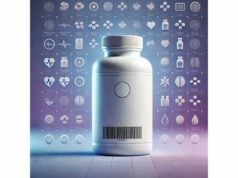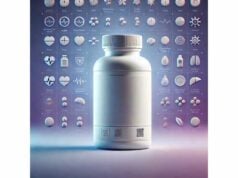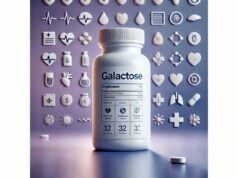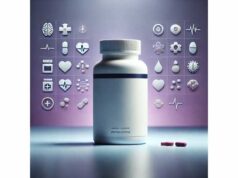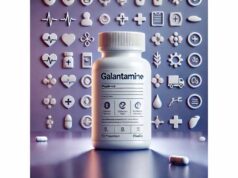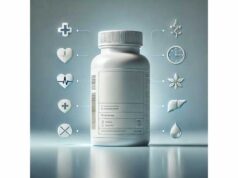GHK-Cu is a naturally occurring copper tripeptide—glycyl-L-histidyl-L-lysine bound to copper(II)—best known for its role in skin repair and cosmetic dermatology. First identified in human plasma, GHK helps shuttle copper, a vital trace mineral for antioxidant enzymes and collagen-building processes. When complexed with copper as GHK-Cu, it can signal cells to produce structural proteins, dampen excessive inflammation, and support tissue remodeling. In practice, people use topical GHK-Cu to improve skin texture and tone, aid post-procedure recovery, and as an adjunct for scalp and hair-care routines. While its safety profile in cosmetics is generally favorable, dosing is not standardized, and clinical evidence varies by use case. This guide explains what GHK-Cu is, how it works, where it shows promise, how to use it wisely, the right dosage ranges to consider, who should avoid it, and what the best research actually says.
Quick Overview
- Supports collagen and extracellular matrix renewal; may improve skin firmness and fine lines over weeks to months.
- Calms excess inflammation and oxidative stress; helpful after procedures when used appropriately.
- Typical topical use: 0.05%–0.2% GHK-Cu once daily; post-procedure or microneedling serums often 1–2 mg/mL as directed by a clinician.
- Avoid simultaneous use with strong acids, peroxides, or chelators that can destabilize copper.
- Do not use if you have Wilson disease, active skin infection, or a known copper allergy; discuss systemic use during pregnancy or nursing with a clinician.
Table of Contents
- What is GHK-Cu and how it works
- What benefits can you expect?
- How to use GHK-Cu on skin and scalp
- How much GHK-Cu per day?
- Safety, interactions, and who should avoid it
- What the research really shows
What is GHK-Cu and how it works
GHK-Cu is a small endogenous (made in the body) copper-binding complex formed when the tripeptide GHK chelates copper(II). In blood and tissues, GHK acts like a courier that helps regulate copper availability. Copper itself is indispensable: it sits at the heart of enzymes such as superoxide dismutase (SOD1) and lysyl oxidase, which defend against oxidative damage and cross-link collagen and elastin. By escorting copper to where it is needed—and away from where free copper could be harmful—GHK-Cu helps maintain a healthy balance between repair signaling and oxidative stress.
From a skin perspective, GHK-Cu interacts with fibroblasts (the cells that build dermal scaffolding) and appears to stimulate production of collagen, elastin, decorin, and glycosaminoglycans. It can also moderate matrix metalloproteinases (MMPs), enzymes that break down old or damaged matrix. This dual action—build up what you want, put the brakes on what you don’t—explains why the peptide is commonly positioned as a remodeling and rejuvenating ingredient.
Mechanistically, GHK-Cu behaves less like a simple antioxidant and more like a signal that tilts cell programs toward repair and anti-inflammatory states. In cell models, GHK (with or without copper, depending on context) can bind divalent metals and reduce the redox mischief that leads to protein aggregation and cell stress. In animal and in vitro systems, GHK-Cu has shown anti-inflammatory effects, supporting wound granulation tissue, angiogenesis (capillary formation), and improved tensile strength during healing. These effects are consistent with user-visible outcomes—smoother texture, better bounce, and a more even look—when GHK-Cu is used in a smart regimen over several weeks.
A practical wrinkle: the stratum corneum (your skin’s outer barrier) is lipophilic, while GHK-Cu is hydrophilic. That mismatch limits passive penetration. To improve delivery, formulators may use liposomes, microemulsions, or ionic-liquid carriers that increase the peptide’s residence in viable epidermis and superficial dermis. Encapsulation can also protect the peptide and copper from destabilization by oxygen, peroxides, or competing ligands in a formula.
Finally, it helps to understand that age and inflammation can change how tissues handle copper. Endogenous GHK levels appear to decline with age, and inflamed environments can exaggerate copper’s redox activity. In those contexts, a topical that nudges local copper biology toward balance can be especially useful—provided the formulation is sound and you give it time to work.
What benefits can you expect?
1) Skin texture, firmness, and fine lines.
Topical GHK-Cu is favored for improving superficial fine lines, firmness, and elasticity. Unlike retinoids, which mainly accelerate cell turnover and collagen synthesis via nuclear receptors, GHK-Cu seems to nudge extracellular matrix remodeling—encouraging new collagen and decorin while tempering matrix-degrading enzymes. In routine cosmetic use, users often report smoother and bouncier skin tone after 6–12 weeks. The degree of change depends on baseline photoaging, product strength, and formulation quality. Clinical imaging data are limited compared with retinoids, but small human trials and a larger preclinical literature support GHK-Cu’s remodeling actions.
2) Post-procedure recovery.
After pro-procedural insult (e.g., fractional laser, radiofrequency microneedling, or chemical peels), GHK-Cu serums or creams may soothe erythema, dampen excess inflammation, and support organized collagen deposition. An older randomized trial in post-laser patients did not show faster resolution of redness versus control, but users reported higher satisfaction with the peptide regimen. That nuance matters: GHK-Cu may not be a miracle for downtime, yet it can make recovery feel better and potentially encourage quality remodeling when used as part of a physician-guided aftercare plan.
3) Wound-care adjunct (minor).
In controlled lab models, GHK-Cu promotes granulation tissue, angiogenesis, and re-epithelialization, improving tensile strength of healing skin. For everyday cuts and scrapes, it’s reasonable to use a GHK-Cu cream after the wound has been cleaned and initial closure has occurred. Avoid applying to open, infected, or actively bleeding wounds unless instructed by a clinician.
4) Calming inflamed, stressed skin.
By buffering copper-driven oxidative reactions and dialing down inflammatory signaling, GHK-Cu can reduce the “angry skin” look—blotchiness and rough texture—particularly when irritation stems from over-exfoliation or environmental stressors. You’ll still need barrier basics (gentle cleanser, sunscreen, moisturizer); the peptide works best with barrier repair, not instead of it.
5) Hair and scalp support (adjunctive).
Some formulations position GHK-Cu as a scalp tonic. Mechanisms proposed include improved microcirculation, anti-inflammatory effects around the follicle, and encouragement of extracellular matrix integrity in the bulge region. Human evidence is preliminary. If you already use minoxidil or low-level laser therapy, adding a GHK-Cu scalp serum is reasonable, but temper expectations and evaluate after 3–6 months.
What results feel realistic?
- Timeline: Subtle glow and smoothness may appear in 2–4 weeks; firmness and wrinkle changes take 8–12+ weeks.
- Magnitude: Best for fine lines, texture, and tone; deep folds need procedural support.
- Pairing: Plays well with niacinamide, panthenol, ceramides, and sunscreen. Use caution with strong acids, benzoyl peroxide, and chelators (see Safety).
How to use GHK-Cu on skin and scalp
Daily skincare (face/neck):
- Cleanse with a mild, low-pH cleanser. Pat dry.
- Apply GHK-Cu serum (0.05%–0.2%) to slightly damp skin. A pea-sized amount covers face and neck.
- Moisturize with a barrier-supportive cream (ceramides, cholesterol, fatty acids).
- AM only: Finish with broad-spectrum SPF 30+.
- Frequency: Once daily is typical. If sensitive, start every other night for 1–2 weeks, then increase.
Stacking in a routine:
- Compatible: niacinamide (2–5%), hyaluronic acid, panthenol, centella extract, azelaic acid (10%).
- Caution: high-strength AHAs/BHAs, benzoyl peroxide, and ascorbic acid can destabilize peptides or irritate when layered; separate by 12 hours or alternate days.
- Avoid together: products rich in EDTA, phytic acid, or other strong chelators, which may strip copper from the complex.
Post-procedure support (with clinician guidance):
- Laser/peel/microneedling: Many practices use a clinic-compounded GHK-Cu solution 1–2 mg/mL applied immediately post-procedure and for 3–7 days thereafter to ease sensation and support re-epithelialization. Always defer to your surgeon’s specific protocol—some prefer bland emollients for the first 24–48 hours.
- Patch-test logic: After the barrier re-seals (usually 24–72 hours, procedure-dependent), patch test behind the ear or along the jawline before full-face use.
Scalp routine (adjunct):
- Frequency: Once daily or 3–5 nights per week.
- Application: 5–10 sprays or 1–2 mL serum massaged into thinning zones.
- Combinations: Compatible with minoxidil (apply at separate times to reduce dilution). Consider ketoconazole shampoo 2–3 times/week if seborrheic inflammation is present.
Storage and stability:
- Keep tightly capped, away from heat and light.
- Color can range from pale blue to light turquoise; darkening or metallic odor suggests oxidation—time to replace.
- Use within 6–12 months of opening, or the period-after-opening icon on the label.
Troubleshooting common issues:
- Stinging or redness: Reduce frequency, buffer with moisturizer first, or switch to a cream base.
- No visible change at 12 weeks: Check concentration, simplify the routine (remove potential antagonists), and verify daily sunscreen use.
- Breakouts: Ensure the formula is non-comedogenic; apply less, and avoid occlusive layers on acne-prone zones.
How much GHK-Cu per day?
There is no official, standardized medical dosage for GHK-Cu in cosmetics or over-the-counter topicals. The ranges below reflect common practice in dermatology-adjacent settings and product labeling. When in doubt, follow your product’s instructions or your clinician’s orders.
Everyday cosmetic use (face/neck):
- Serums and creams: 0.05%–0.2% GHK-Cu, applied once daily. Sensitive skin can start every other night for two weeks.
- Spot care: For post-blemish marks or procedural sites (closed skin only), a thin layer 1–2 times/day for 2–4 weeks may be used.
Clinic-guided use (post-procedure):
- Solutions for immediate aftercare: 1–2 mg/mL applied by staff; at home, many protocols continue with a peptide cream for 3–7 days, then resume the regular serum.
- Microneedling adjunct: Some clinicians use 1 mg/mL during passes; others reserve peptides for the first 24–72 hours only. Protocols vary—follow medical guidance.
Scalp applications:
- Leave-on serum: Typically 0.05%–0.2%, once daily or 3–5x/week.
- Evaluation window: Reassess at 3 months for texture/shed and 6 months for density.
Body or scar care:
- Thin layer 1–2 times/day for 8–12 weeks over fully healed scars, paired with silicone sheeting and sun protection.
When to apply (timing tips):
- Night use minimizes interference with vitamin C or peroxides often used in morning routines.
- If using acids/retinoids, separate by alternate nights or apply GHK-Cu in the morning and actives at night.
Do not exceed more products to “push” results—higher concentration does not always mean better outcomes. Consistency and smart pairing matter more than sheer dose.
Safety, interactions, and who should avoid it
Overall tolerance:
Topical GHK-Cu is generally well tolerated. Reported reactions are mostly mild and transient: stinging, redness, tightness, or temporary blue-green tint (from copper) that fades after absorption. True allergy to copper peptides is rare but possible—stop use and seek evaluation if you develop persistent itching, hives, or swelling.
Formulation pitfalls:
- Strong acids (AHAs/BHAs), benzoyl peroxide, and high-dose ascorbic acid can destabilize peptides or irritate when layered; separate by time or alternate days.
- Chelators (e.g., EDTA, phytic acid) can strip copper from GHK-Cu, potentially reducing efficacy.
- Peroxide developers (hair dye, certain acne treatments) may oxidize copper; avoid applying GHK-Cu immediately before or after.
Interactions and special situations:
- Wilson disease or copper storage disorders: Avoid GHK-Cu and discuss any copper-containing product with your specialist.
- Infected, open, or actively weeping skin: Do not apply until cleared by a clinician.
- Pregnancy and nursing: Human safety data for systemic exposure are limited; topical cosmetic use is likely low exposure, but discuss with your obstetric provider—especially if using large surface areas or post-procedure.
- Children: Use only under pediatric guidance.
- Metal sensitivities: If you react to copper jewelry, patch test first.
- Eyes: Avoid direct ocular contact; use peri-ocular formulations designed for that area if desired.
Environmental and systemic copper:
GHK-Cu does not meaningfully increase systemic copper when used as a topical cosmetic as directed. Still, be sensible: avoid slathering high-dose solutions over very large areas daily, and do not ingest or inject non-medical formulations.
When to seek medical advice:
- Severe eczema flare, unexpected swelling, rash spreading, or signs of infection (warmth, pus, fever).
- No improvement after 12 weeks despite consistent use—consider professional assessment and alternative strategies (e.g., retinoids, procedures).
Smart safety checklist:
- Patch test behind the ear for 24–48 hours.
- Introduce one new active at a time.
- Pair with daily sunscreen, since UV undermines collagen gains.
- Keep routines simple around procedures; let your clinician set the pace.
What the research really shows
Basic science is strong; clinical data are growing but still selective.
Decades of lab and animal studies show that GHK-Cu supports wound repair, angiogenesis, and organized collagen remodeling. In vitro work suggests GHK can buffer copper and zinc, mitigating the protein aggregation and redox stress that otherwise amplify inflammation. Newer studies continue to map how GHK-Cu interacts with antioxidant enzyme systems and inflammatory pathways, offering plausible explanations for the improvements people see in skin texture and tone.
Human data exist—but are not as extensive as for retinoids or hydroxy acids.
In a randomized post-laser trial, a GHK-Cu regimen did not shorten redness or objectively outperform control on wrinkles within twelve weeks, though patient-reported satisfaction was higher. This underscores a theme: GHK-Cu is supportive and remodeling-oriented, not a quick fix for acute erythema. Small cosmetic studies and histology-based reports have shown increases in dermal markers associated with firmness, but comprehensive, large RCTs comparing GHK-Cu to first-line actives are still limited.
Delivery matters.
Because the peptide is hydrophilic, penetration enhancers can meaningfully influence outcomes. Research reviews highlight liposomes and ionic-liquid microemulsions as promising ways to boost skin residence and controlled release, especially in the viable epidermis. For consumers, this means formulation quality and brand transparency about concentration, encapsulation, and stability are worth prioritizing.
Beyond cosmetics?
Exploratory work is testing GHK-Cu in inflammatory and fibrotic conditions, as well as in neuro-inflammation models where copper-induced aggregation is a problem. These directions are early-stage and not clinical treatment guidance, but they help explain why the peptide continues to attract scientific interest.
Bottom line for users:
- Expect gradual improvements in smoothness, fine lines, and bounce over 8–12+ weeks.
- Use a well-formulated product (0.05%–0.2%) and consistent sunscreen to protect gains.
- Consider GHK-Cu as an adjunct, not a replacement, for evidence-heavy options when tackling deeper wrinkles or significant laxity.
References
- Regenerative and Protective Actions of the GHK-Cu Peptide in Human Skin 2018 (Review)
- Are We Ready to Measure Skin Permeation of Modern Antiaging GHK–Cu Tripeptide Encapsulated in Liposomes? 2025 (Review)
- Glycyl-l-histidyl-l-lysine prevents copper- and zinc-induced protein aggregation and central nervous system cell death in vitro 2024
- The glycyl-l-histidyl-l-lysine-Cu2+ tripeptide complex exerts cellular antioxidant enzyme-like and anti-inflammatory properties in vitro 2024
- Effects of topical copper tripeptide complex on CO2 laser-resurfaced skin 2006 (RCT)
Disclaimer
This article is for educational purposes only and does not provide medical advice. It is not a substitute for professional diagnosis, treatment, or individualized recommendations. Do not use GHK-Cu on open or infected skin, and consult a qualified clinician before using if you are pregnant or nursing, have a copper metabolism disorder (such as Wilson disease), or are considering post-procedure use. Always follow your healthcare professional’s instructions and the directions on your product label.
If you found this guide helpful, please consider sharing it on Facebook, X (formerly Twitter), or your preferred platform, and follow our social channels. Your support helps us keep creating clear, evidence-based resources. Thank you.

